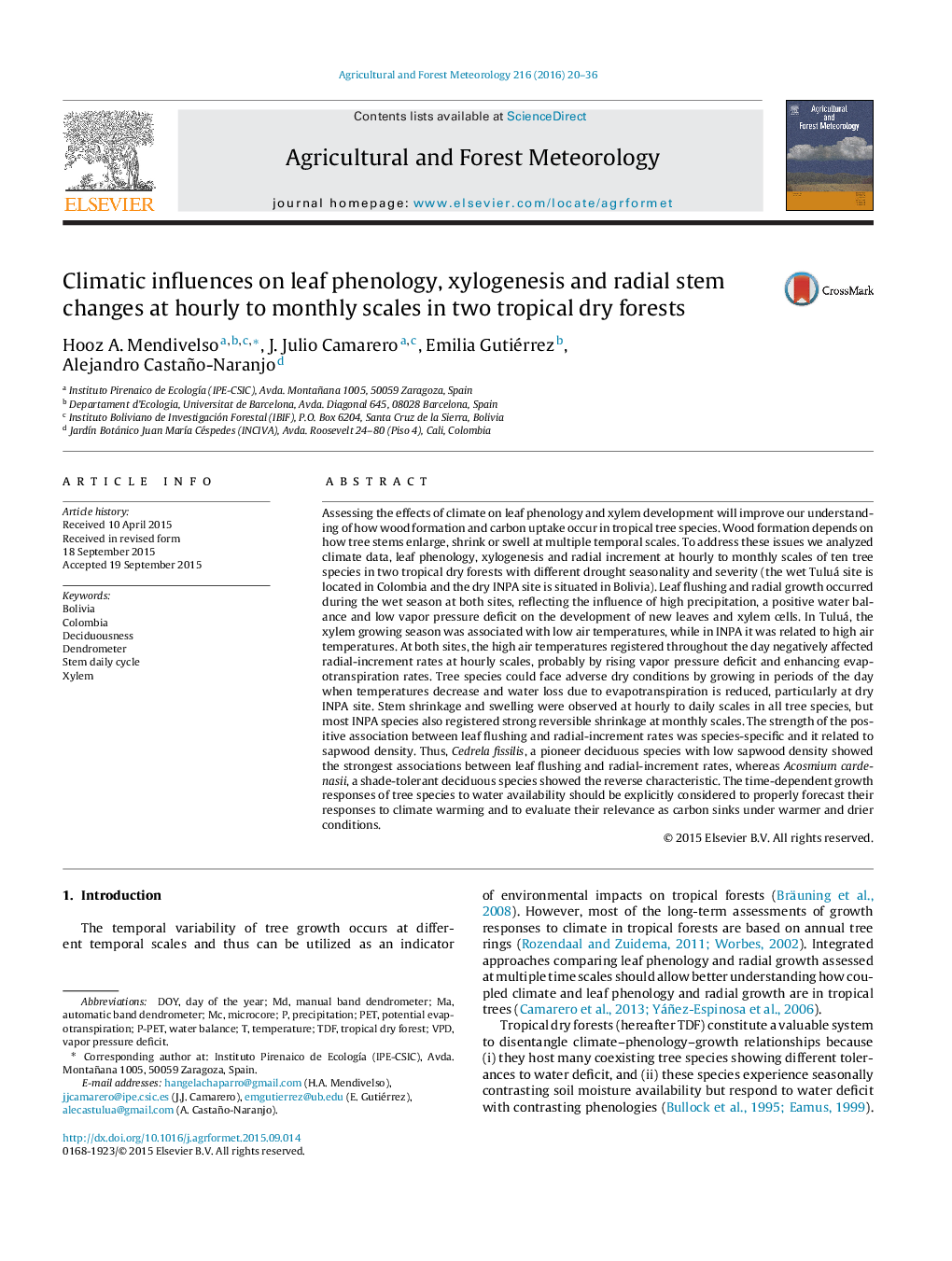| کد مقاله | کد نشریه | سال انتشار | مقاله انگلیسی | نسخه تمام متن |
|---|---|---|---|---|
| 6537091 | 158318 | 2016 | 17 صفحه PDF | دانلود رایگان |
عنوان انگلیسی مقاله ISI
Climatic influences on leaf phenology, xylogenesis and radial stem changes at hourly to monthly scales in two tropical dry forests
ترجمه فارسی عنوان
تأثیرات آب و هوایی بر روی فنولوژی برگ، زایلوژنز و تغییرات ساقه شعاعی در مقیاس ساعات روز تا ماهانه در دو جنگل خشک گرمسیری
دانلود مقاله + سفارش ترجمه
دانلود مقاله ISI انگلیسی
رایگان برای ایرانیان
کلمات کلیدی
XylemVPDTDFDOY - انجام دهیدPrecipitation - بارندگیBolivia - بولیوی potential evapotranspiration - تبخیر تبخیری بالقوهWater balance - تعادل آبTropical dry forest - جنگل خشک گرمسیریTemperature - دماDendrometer - دندرومترday of the year - روز سالPET - پتDeciduousness - چرکینگیvapor pressure deficit - کسری فشار بخارColombia - کلمبیا
موضوعات مرتبط
مهندسی و علوم پایه
علوم زمین و سیارات
علم هواشناسی
چکیده انگلیسی
Assessing the effects of climate on leaf phenology and xylem development will improve our understanding of how wood formation and carbon uptake occur in tropical tree species. Wood formation depends on how tree stems enlarge, shrink or swell at multiple temporal scales. To address these issues we analyzed climate data, leaf phenology, xylogenesis and radial increment at hourly to monthly scales of ten tree species in two tropical dry forests with different drought seasonality and severity (the wet Tuluá site is located in Colombia and the dry INPA site is situated in Bolivia). Leaf flushing and radial growth occurred during the wet season at both sites, reflecting the influence of high precipitation, a positive water balance and low vapor pressure deficit on the development of new leaves and xylem cells. In Tuluá, the xylem growing season was associated with low air temperatures, while in INPA it was related to high air temperatures. At both sites, the high air temperatures registered throughout the day negatively affected radial-increment rates at hourly scales, probably by rising vapor pressure deficit and enhancing evapotranspiration rates. Tree species could face adverse dry conditions by growing in periods of the day when temperatures decrease and water loss due to evapotranspiration is reduced, particularly at dry INPA site. Stem shrinkage and swelling were observed at hourly to daily scales in all tree species, but most INPA species also registered strong reversible shrinkage at monthly scales. The strength of the positive association between leaf flushing and radial-increment rates was species-specific and it related to sapwood density. Thus, Cedrela fissilis, a pioneer deciduous species with low sapwood density showed the strongest associations between leaf flushing and radial-increment rates, whereas Acosmium cardenasii, a shade-tolerant deciduous species showed the reverse characteristic. The time-dependent growth responses of tree species to water availability should be explicitly considered to properly forecast their responses to climate warming and to evaluate their relevance as carbon sinks under warmer and drier conditions.
ناشر
Database: Elsevier - ScienceDirect (ساینس دایرکت)
Journal: Agricultural and Forest Meteorology - Volume 216, 15 January 2016, Pages 20-36
Journal: Agricultural and Forest Meteorology - Volume 216, 15 January 2016, Pages 20-36
نویسندگان
Hooz A. Mendivelso, J. Julio Camarero, Emilia Gutiérrez, Alejandro Castaño-Naranjo,
